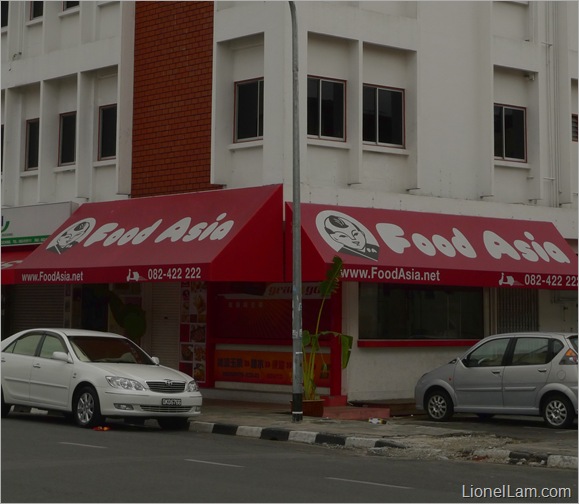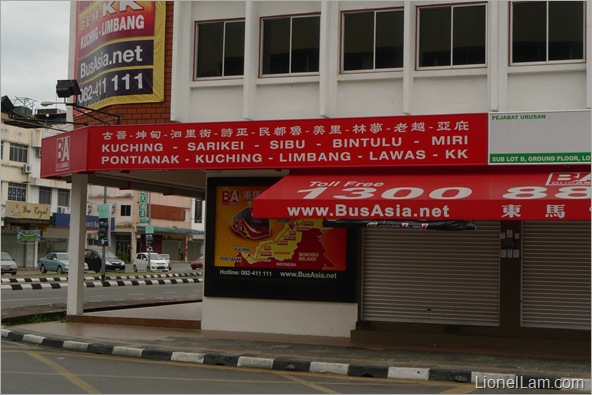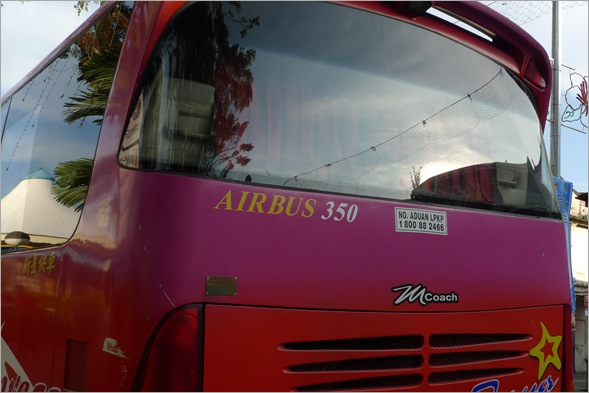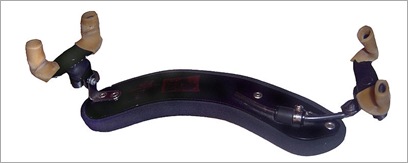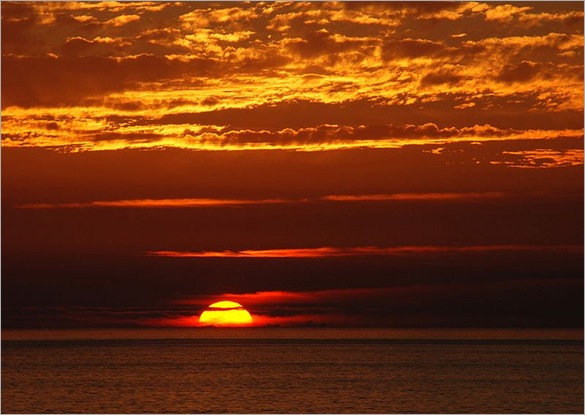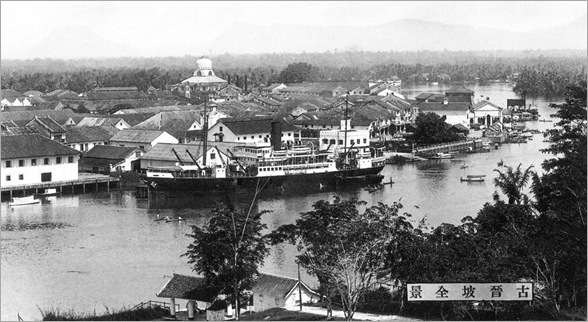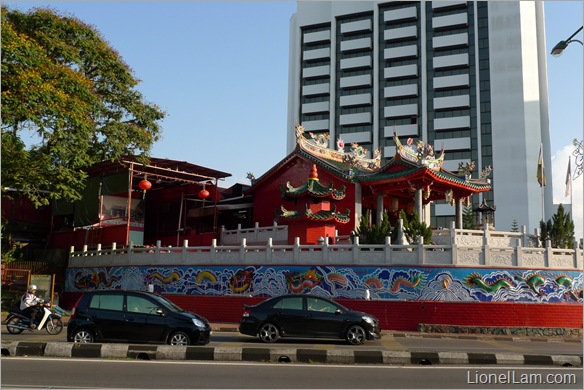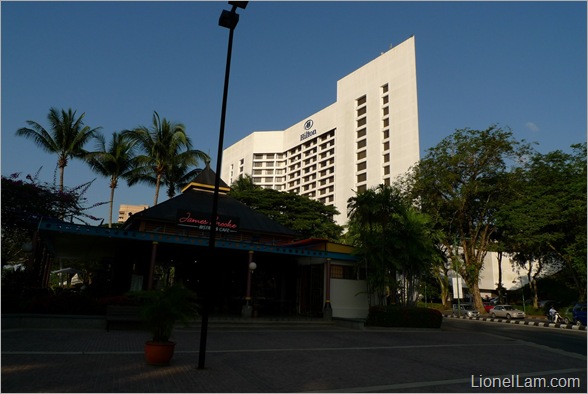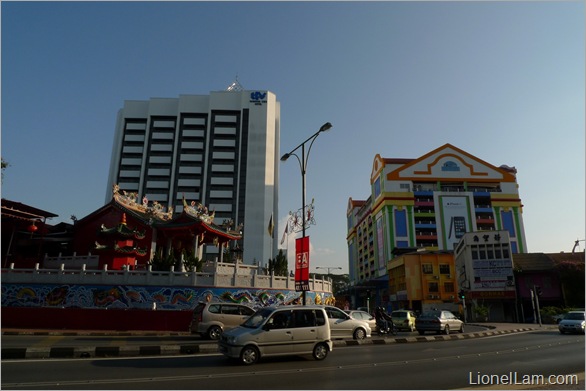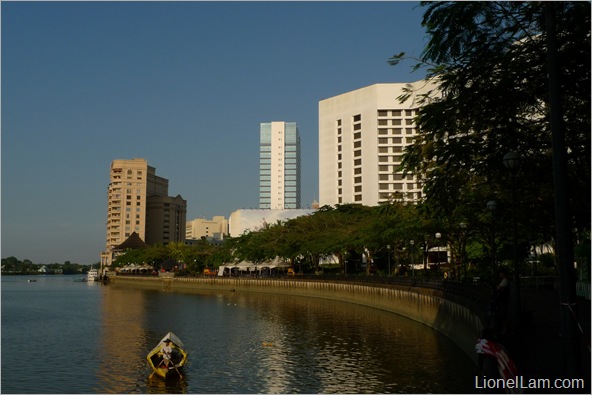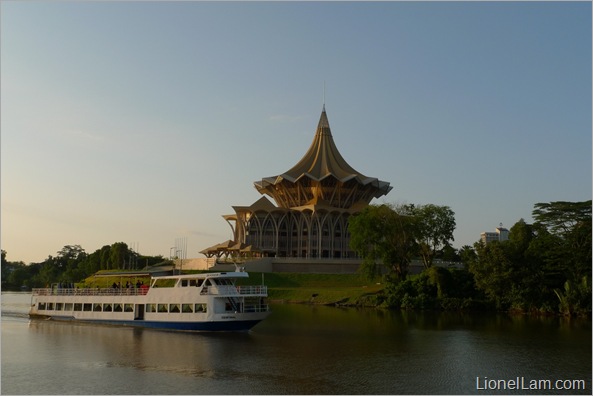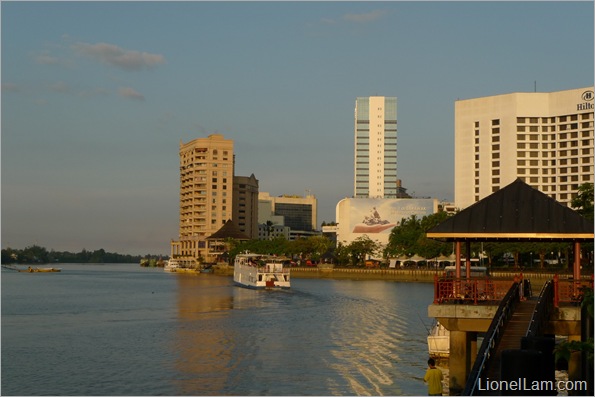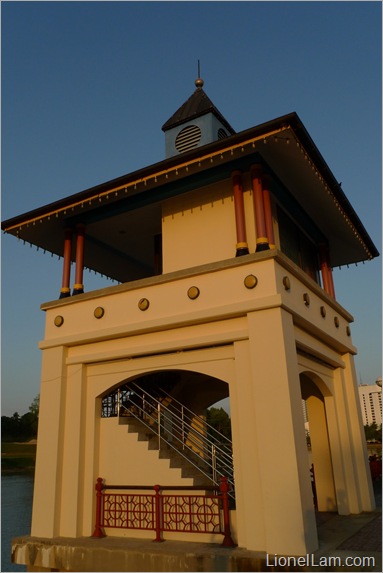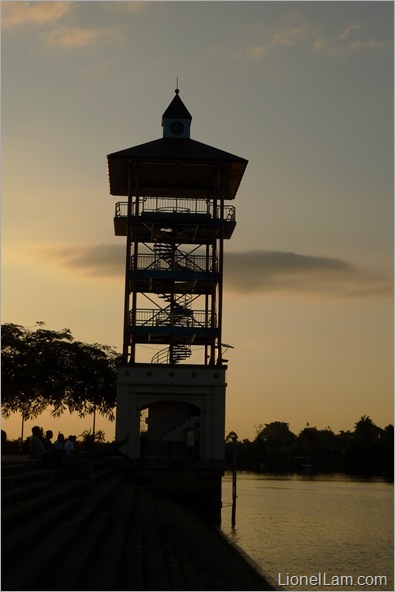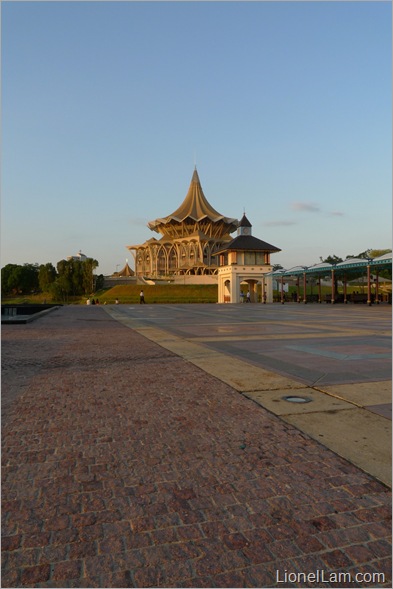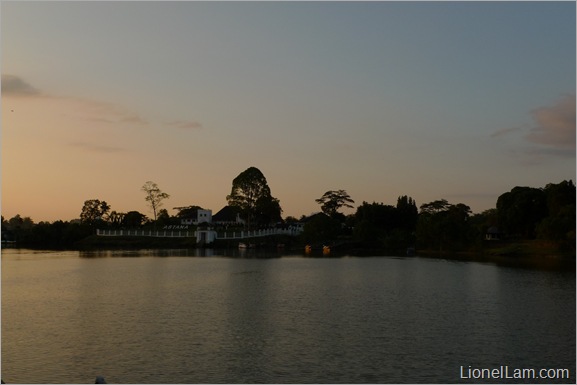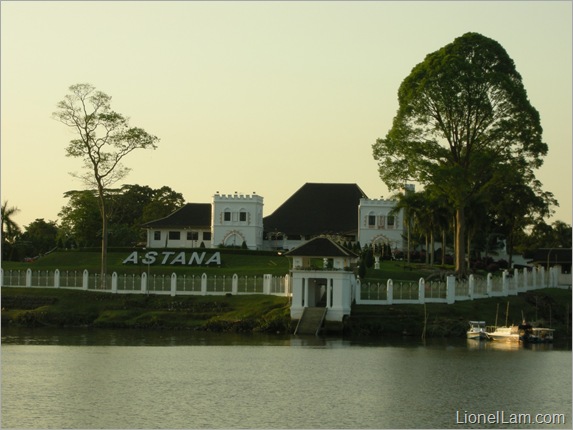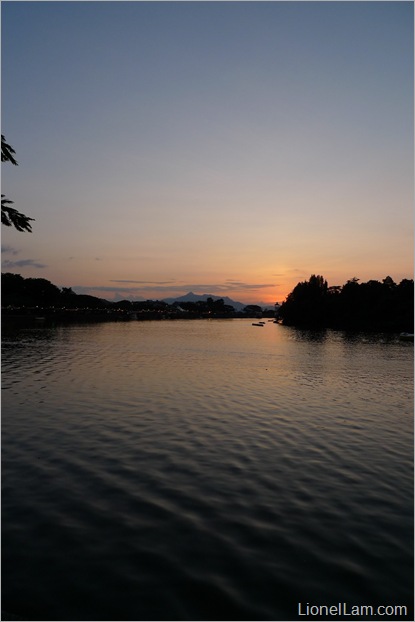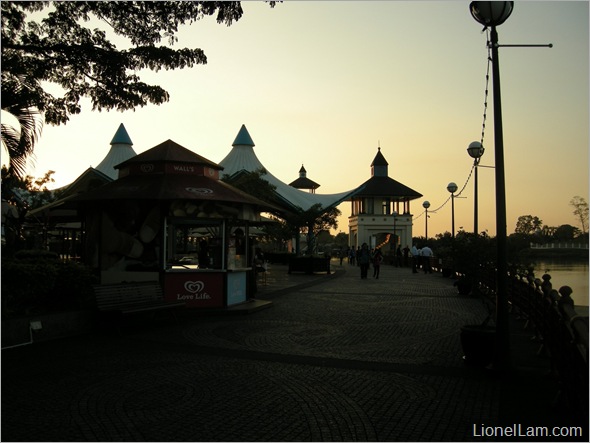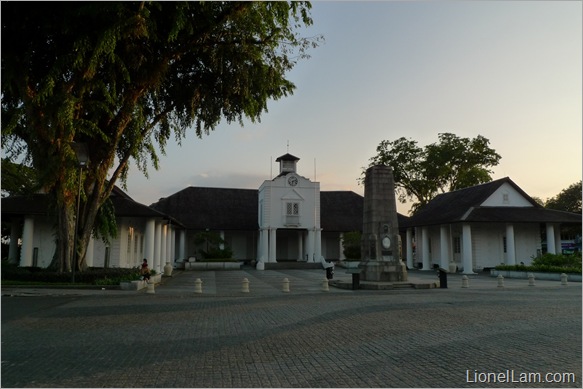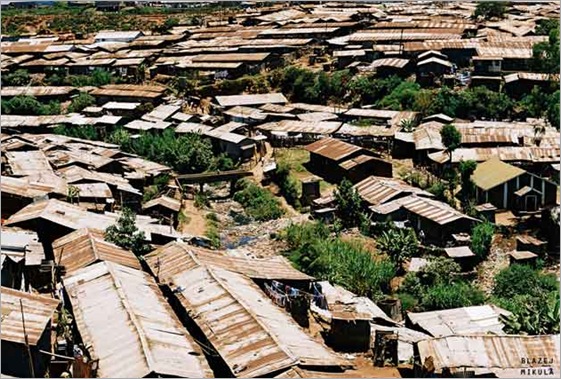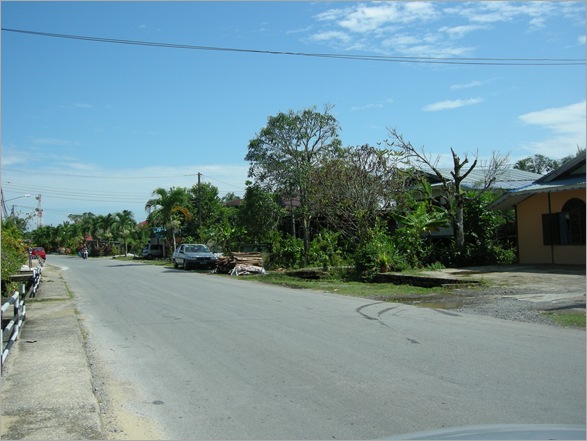 Road to Simunjan town centre.
Road to Simunjan town centre.
On the 27th of June 2009, I had the privilege of travelling to Simunjan with my uncle. Simunjan is a small town located some 150 kilometers from Kuching, the capital of Sarawak state, East Malaysia. We left home at around 7.30am, had a hearty breakfast of kolo mee and wonton soup to prepare us for the long trip ahead. It was quite a long trip down the road, but the relatively new Kuching-Serian highway made possible to drive up to speeds of 120 kilometers per hour without winding up in a ditch. I regret not taking pictures of the trip to the town as it had been rather breathtaking and scenic, with lush greeneries and sago palms as well as durian trees lining the otherwise rather homogenous landscape.
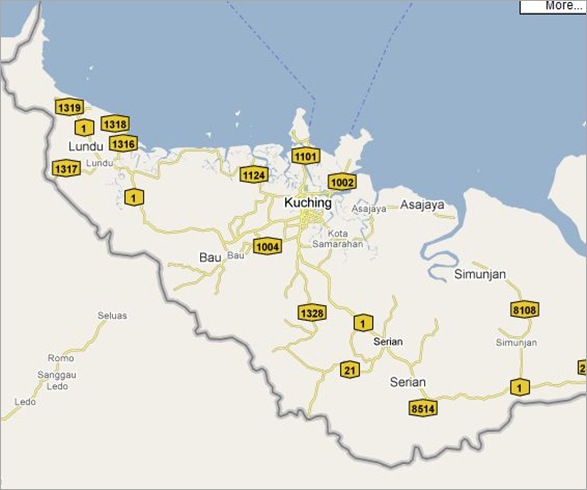 Simunjan is a small town located South-East of Kuching.
Simunjan is a small town located South-East of Kuching.
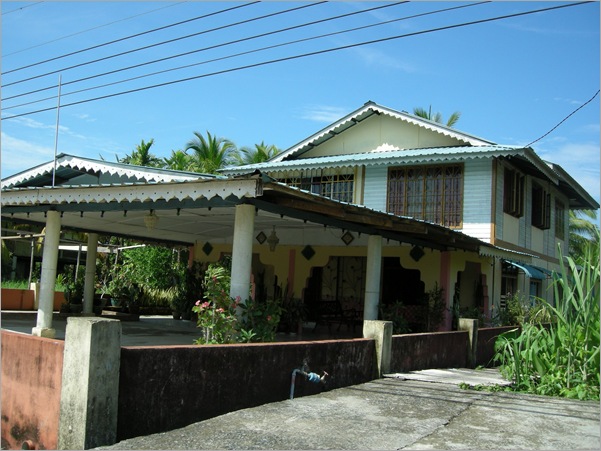 A typical Simunjan town house.
A typical Simunjan town house.
After several hours and stops later, at approximately 11.45am, we arrived at Simunjan town where my uncle hired a guide to take us up a neighboring mountain. This mountain is home to a coal mine that was set up by the British colonial government in the olden days and was taken over by the Japanese during their years of occupation of the state.
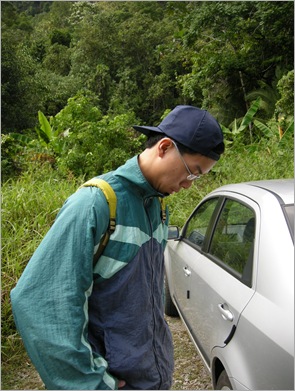
We parked the car at the foot of the mountain. We had to wear long-sleeved shirts as we had no plans to feed the hungry and vicious mosquitoes. Our guide, Jusop, who hails from the town runs his own farm nearby, so he was quite familiar with the mines in the area. According to Jusop, the mines, which have long been abandoned, are so obscured from view that not many people, even from the town, know where to locate them.
The ascend, in my honest and humble opinion, was quite a challenge (it was fun, by the way), as I never did rank very high when it came to my own stamina and strength. But these trips to the countryside usually afford me the opportunity to see things that the average Joe in the city (or if you’d like to put it, any Tom, Dick and Harry) don’t usually see.
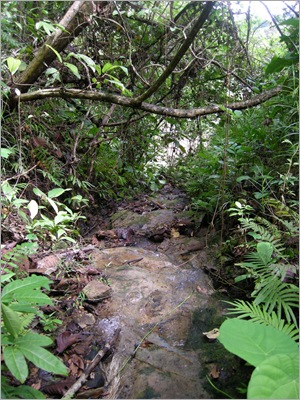
Part of the ascend up the mountain involved climbing flights of rock ‘stairs’ which had been carved naturally by water flowing from the top of the mountain. In fact, if you were to take a closer look at the photo to the right, you’d notice remnants of miniature rock pools.
There is an old saying here that respect towards the jungle: wildlife, plants and the elements, constitutes respect towards the unseen spirits that are said to reside in the jungle. That being said, I was really careful not to step on the numerous centipedes that I saw along the way to the top. Perhaps I was just being paranoid.
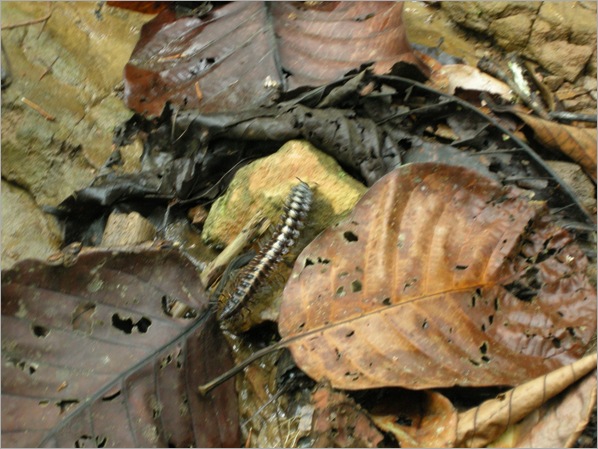
One of the many centipedes I saw along the way.
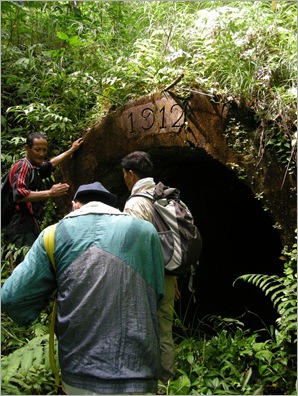
At around noon, we reached the first mine entrance. As you can see in the picture to the left, Jusop was telling us a bit about the history of the mine. It is learnt that this is one of several entrances to a fairly elaborate network of tunnels. The year inscribed on the apex of the tunnel indicates the year the tunnel was built. Closer inspection of the tunnel interiors showed that the mine shaft had collapse and was no longer safe to enter. I wouldn’t be surprised there were mine workers entombed in these tunnels.

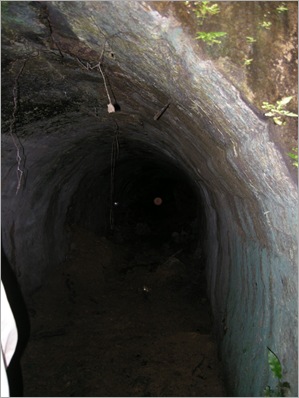
The picture to the left shows the collapsed portion of the tunnel, which is some 20 meters up ahead.
In about 20 minutes, we left the first tunnel for the second one, which was about another 30 minutes walk from the first one.
It was difficult to ascertain the age of the second tunnel (photo: below right) as unlike the first tunnel, there was no inscription found on this tunnel. The second tunnel opening was square-shaped and we believed it to be older than the first one, judging by the size of the opening and the condition of the walls.
According to the guide, there was an elaborate network of rails which were used to transport the coal to the base of the mountain. Obviously, the rails were not visible at first glance as the floor had become so dense with undergrowth (photo: below left).
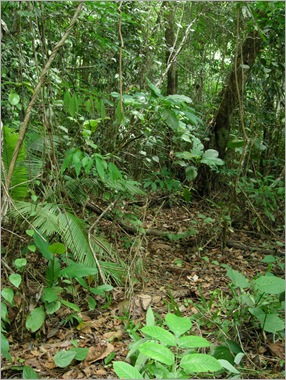
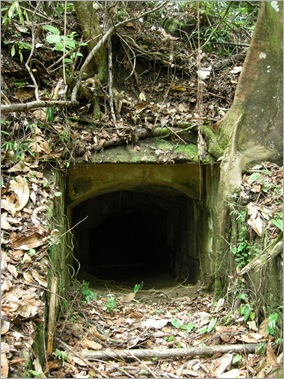
Photo to left: The forest floor had become overgrown with vegetation that it was nearly impossible to tell where the rails led to.
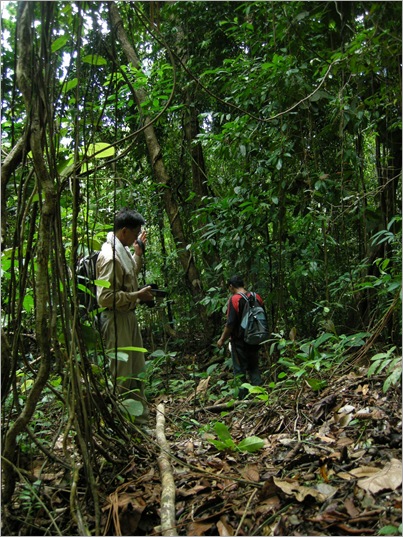 My uncle taking a reading from a GPS device. To his right was Jusop, our guide.
My uncle taking a reading from a GPS device. To his right was Jusop, our guide.
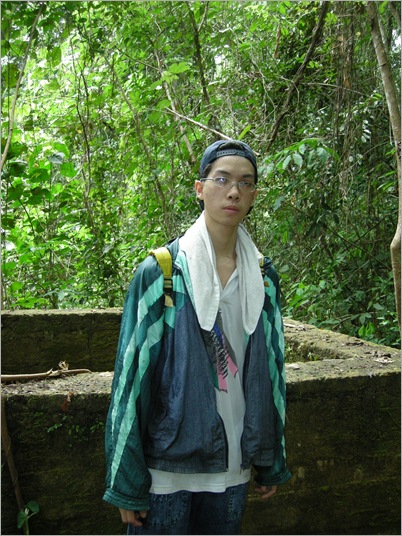
My brother Aaron, standing by a well built by the Japanese.

The well up close.
A Closer Look at Nature
We decided that there was nothing else to do after seeing the second tunnel so we prepared for descent, but not without taking a few quick shots of what mother nature has to offer.
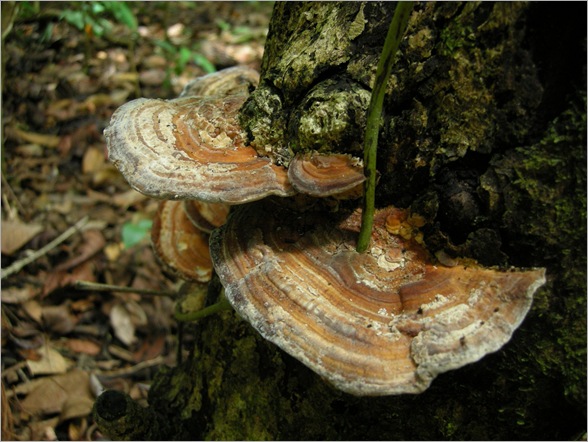 Bracket fungi growing on living tree.
Bracket fungi growing on living tree.
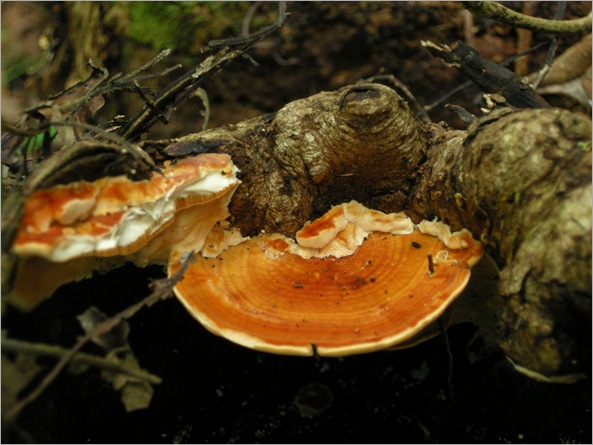 Bracket fungi growing on living tree (near the well and 2nd tunnel).
Bracket fungi growing on living tree (near the well and 2nd tunnel).
We reached the base of the mountain at around 1pm. My feet were numb, I was dreadfully thirst, and of course, hungry.

A village road. Notice the farmhouse to the left.
So we headed to Simunjan town center for lunch.
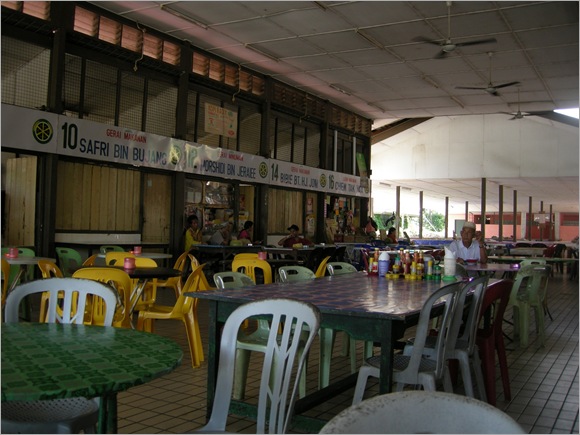 Food court at Simunjan town.
Food court at Simunjan town.
It was only around 1.20pm when we arrived at the food court, and it was really deserted. A funny thing that we didn’t fail to notice was the manner which the stalls were arranged; drinks stalls and food stalls were arranged alternately. Perhaps most amusing was the fact that there actually was a Hilton at Simunjan. But it pays to have an open mind….
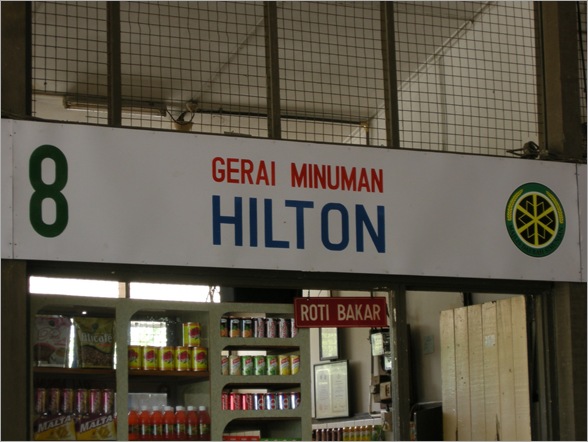 I told you I wasn’t lying when I said there’s a Hilton there in Simunjan…High tea at Hilton anyone?
I told you I wasn’t lying when I said there’s a Hilton there in Simunjan…High tea at Hilton anyone?
The food there was not too bad either. I can honestly say, in all my years of eating out, I rarely can find a food outlet that serves soup as good as this one (pictured below). In stark contrast, the soup at All Joy Good Food in Kuching tasted like salted dishwater.

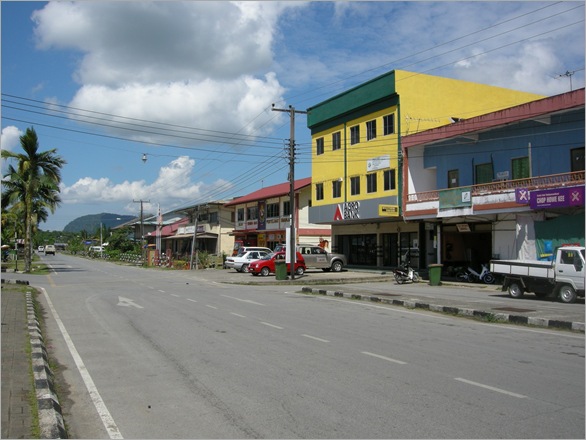
The heart of Simunjan town.

100% Discount Store at Simunjan town center.
 Simunjan fire station.
Simunjan fire station.
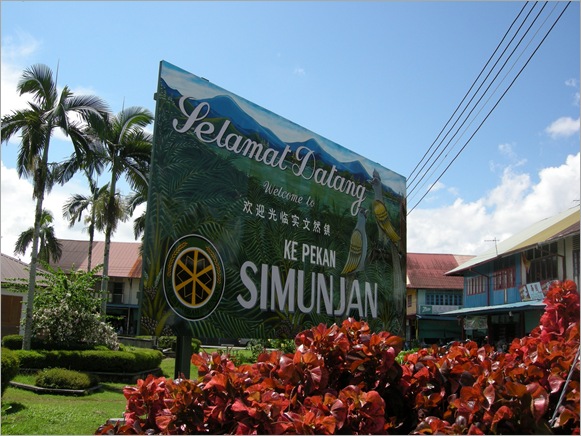 Saying our goodbyes to Simunjan as we headed back to Kuching.
Saying our goodbyes to Simunjan as we headed back to Kuching.
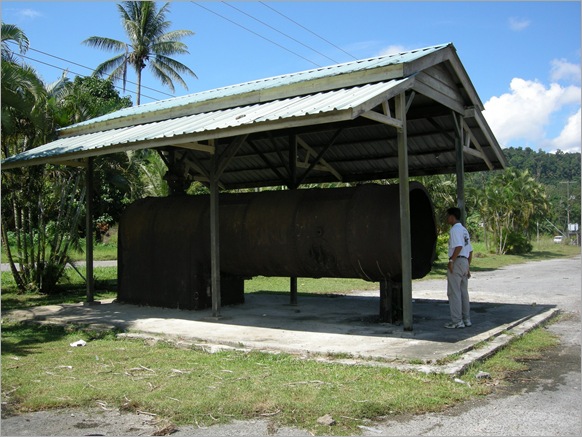 British-built steam engine.
British-built steam engine.
On the way back to Kuching, we came across an old steam engine which was located by the Simunjan road. It’s real purpose? It’s been keeping us guessing until now.

The Kuching-Serian Highway on the way back home.
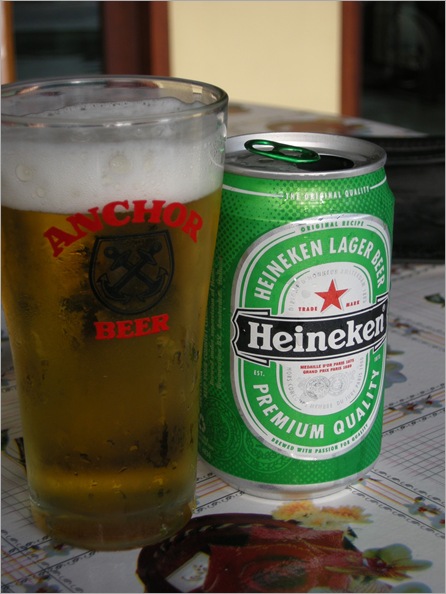 After a tiring day, it’s good to be back home.
After a tiring day, it’s good to be back home.
A Little Lesson On History…
According to my uncle, the history of the mines could be traced back to the year 1872, or possibly earlier, during the era of the first white rajah of Sarawak, James Brooke.
An excerpt from an email from my uncle best describes the scenarios in the old days:
“As I stood in front of those two mines (dated 1912 or earlier), I needed some moments of total peace and silence to try to capture all that had happened around there over some 40-50 years. I could see a few of the English men leading the natives clearing the land, leveling the hills, digging the tunnels into the hills with spade and changkols, then hauling the iron rails up the hills, then years of crawling and digging, all the sweat and pain, how many died from accidents, sickness and diseases. In the early years some buffaloes were used to haul the coal but his was later replaced by steam locomotives. As we stood there, the two tunnels bear testimony of the nameless people who had given their efforts to produce the 1 million tons of coal from 1874 to 1931. May be this was the reason why the local people wanted to close the chapter of this history and they do not want to hear the stories anymore! As I stood in front of those two mines (dated 1912 or earlier), I needed some moments of total peace and silence to try to capture all that had happened around there over some 40-50 years. I could see a few of the English men leading the natives clearing the land, leveling the hills, digging the tunnels into the hills with spade and changkols, then hauling the iron rails up the hills, then years of crawling and digging, all the sweat and pain, how many died from accidents, sickness and diseases. In the early years some buffaloes were used to haul the coal but his was later replaced by steam locomotives. As we stood there, the two tunnels bear testimony of the nameless people who had given their efforts to produce the 1 million tons of coal from 1874 to 1931. May be this was the reason why the local people wanted to close the chapter of this history and they do not want to hear the stories anymore!”
Yes, it was 1 million tons of coal extracted from those mines in those years. Why then were the mines closed down in the year 1932? One reason for the closure was the switching from coal to oil as an energy source of ships and power stations. The demand of gold from the Bau gold mines also waned in those year, and so did the demand of coal.
According to old records, the mines were mostly managed by Englishmen, among them was one Brooketon who was in charge of the mines from 1910 to 1931, until the mines closed. The mines were resurrected by the Japanese during their occupation of the state, and they somehow managed to extract some additional 3000 tons of coal from the miles of tunnels deep within.
I have personally seen the records of the mines, containing even the tonnage of the coal yield. The records from the geological department showed even the minutest of detail, right up to the thousands of tons extracted every year until the mines closed in 1932. My uncle even remarked that the English have been known to possess an impeccable sense of observation, and keenness towards their surroundings, and this is evident in the works of famous naturalist Russell Wallace, who in 1855, spent a few months collecting as many as 2000 species of beetles in Simunjan!
If the Chinese had gotten there before the British, the beetles would have become a staple diet of the local folk, he joked.
The trip to Simunjan had been well worth the effort, as it was an eye-opening experience. I saw what many people never saw, had experienced what many never experienced, and learned what many would never learn. I hope whatever I have written here would give you a glimpse of the history of our magnificent state. Long live Sarawak!
-Lionel Lam.
===END===
